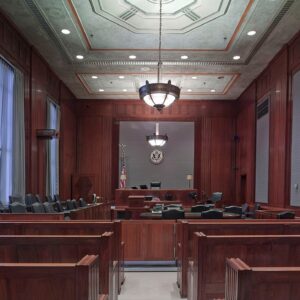Picture this: John, a Long Island resident, recently went through a tough breakup. His ex-partner filed for an Order of Protection against him, claiming harassment. John believed the situation wasn’t serious—he hadn’t contacted her since their split. However, everything changed when he unexpectedly ran into her while grocery shopping in a Nassau County store. She spotted him, called the police, and just like that, John was arrested for violating the Order of Protection. Now, he faces serious criminal charges, the possibility of jail time, and a lasting criminal record.
This scenario isn’t unique. Violations of Orders of Protection in Nassau County, as well as throughout Long Island, occur more frequently than you might think. Whether it’s an accidental encounter or a misunderstanding, the consequences can be severe, including charges of criminal contempt and potential felony convictions.
If you find yourself in a situation similar to John’s, it’s vital to have a top-rated Nassau County criminal defense attorney on your side—particularly who is also a experienced Long Island domestic violence lawyer.
At The R.M.L. Law Firm, PLLC, we specialize in defending clients accused of violating Orders of Protection in Nassau County and Suffolk County. Our experienced legal team is dedicated to protecting your rights and ensuring you receive a fair defense against charges of Order of Protection violations. We will work tirelessly to defend you against these serious allegations and help you achieve the best possible outcome in your case.
What is an Order of Protection in New York?
In New York, a criminal court can issue an order of protection or restraining order to protect individuals who allege harassment, assault, or other violent acts. These orders are common in domestic violence cases but can also arise from disputes involving friends, neighbors, or even co-workers. In family or divorce court, an Order of Protection may be issued to protect individuals during proceedings such as divorce or child custody cases.
Where Orders of Protection Can Be Issued on Long Island
- Criminal Court Orders: These are issued by criminal courts in Nassau and Suffolk counties following an arrest for a violent or harassing offense.
- Family Court Orders: These are issued in family-related cases, such as divorce or child custody disputes, by the family courts in Nassau and Suffolk counties.
Violating an Order of Protection is a criminal offense that can lead to severe consequences, including jail time. That’s why it’s essential to fully understand the scope and implications of any Order of Protection issued against you. Being aware of your rights and the specific terms of the order can help you navigate this challenging situation and protect your future.
Types of Orders of Protection Issued in Long Island Criminal Courts
There are generally two types of Criminal Court Orders of Protection on Long Island:
Full Order of Protection (Stay Away Order)
A Full Order of Protection, often referred to as a “Stay Away Order,” is the most restrictive type of order. It prohibits any form of contact with the protected person—this includes in-person interactions, phone calls, and electronic communications like texts, emails, and social media messages. Even indirect contact, such as sending messages through a third party, is not allowed.
If the protected person resides or works in Nassau County or Suffolk County, you are required to maintain a safe distance from those locations. Failure to comply can result in criminal charges in the county where the violation occurs.
Additionally, if you shared a home with the protected person before the order was issued, you will likely need to move out, regardless of property ownership. This requirement can complicate an already stressful situation, making it essential to find alternative living arrangements promptly.
Limited Order of Protection (Do Not Harass Order)
A Limited Order of Protection, often referred to as a “Do Not Harass Order,” permits contact with the protected person but explicitly prohibits certain behaviors, such as harassment, violence, or threats. While you are allowed to see or speak to the protected individual, it is vital to adhere to the specific restrictions outlined in the order.
For instance, this order may restrict you from making unwanted phone calls, sending text messages, or engaging in any form of communication that could be perceived as threatening or intimidating. Even casual encounters in public places, such as a grocery store or park, can lead to misunderstandings if your behavior is perceived as aggressive or intrusive.
Given the complexities involved, it’s essential to remain mindful of your actions and demeanor during interactions. Small gestures, such as an unexpected visit or an uninvited conversation, could be misconstrued and lead to serious repercussions. By understanding the limitations set by the order, you can help prevent situations from escalating, safeguarding your rights and future.
Common Order of Protection Violation Charges in New York
Violating an Order of Protection can lead to serious legal repercussions, including arrest for one or more of the following charges:
Criminal Contempt in the Second Degree (NY Penal Law 215.50(3))
This charge applies when you intentionally breach any terms of an Order of Protection. If found guilty, you face a Class A misdemeanor, which carries the following penalties:
- Up to 1 year in jail
- 3 years of probation
- A combination of both
- A $1,000 fine
This charge may seem minor, but a conviction can have long-lasting consequences on your personal and professional life.
Criminal Contempt in the First Degree (NY Penal Law 215.51)
You may be charged with Criminal Contempt in the First Degree if you intentionally commit actions that threaten or intimidate the protected person. Specific actions leading to this charge include:
- Harassment through Repeated Calls: Making multiple phone calls without any legitimate purpose to annoy or disturb the protected person.
- Physical Assault: Striking, shoving, kicking, or attempting to make physical contact with the protected individual.
- Displaying Weapons: Showing or using a weapon, or behaving in a manner that suggests a threat of physical harm.
- Stalking Behavior: Following or monitoring the protected person in a way that causes them to feel unsafe.
- Threatening Behavior: Making verbal or written threats against the protected person.
- Electronic Communication: Sending threatening or harassing messages through text, email, or other digital means.
You could also face this charge if you:
- Commit criminal mischief by intentionally or recklessly damaging the protected person’s property valued at over $250.
- Violate the stay-away provision of the Order while having a prior conviction for Criminal Contempt in the Second Degree, Criminal Contempt in the First Degree, or Aggravated Criminal Contempt within the past five years.
A conviction for this offense is a Class E felony, punishable by:
- Up to 4 years in prison
- 5 years of probation
- A combination of both
- A $5,000 fine
These serious charges can have lasting effects on your life, including a criminal record.
Aggravated Criminal Contempt (NY Penal Law 215.52)
Aggravated Criminal Contempt is the most severe charge related to violating an Order of Protection. You may be charged if you:
- Cause Physical Injury: Intentionally or recklessly inflict physical harm or serious injury to the protected person.
- Repeat Violations: Commit Criminal Contempt in the First Degree and have a prior conviction for Aggravated Criminal Contempt.
- Previous Convictions: Commit Criminal Contempt in the First Degree and have been previously convicted of that charge within the last five years.
If charged with Aggravated Criminal Contempt, you face a Class D felony, which carries penalties of:
- Up to 7 years in prison
- 5 years of probation
- A combination of both
- A $5,000 fine
Understanding these charges is essential, as the legal implications can severely impact your future.
Duration of Orders of Protection in Long Island Criminal Courts
If you’re arrested in Nassau or Suffolk County for crimes like domestic violence, stalking, or harassment, the criminal court will likely issue a Temporary Order of Protection. This order remains in place while your case is pending. If you’re convicted, the court may replace it with a Final Order of Protection, which could last:
- Up to 8 years for felonies
- Up to 5 years for Class A misdemeanors
- Up to 2 years for Class B misdemeanors or violations
In some cases, you may be able to avoid a conviction through an Adjournment in Contemplation of Dismissal (ACD). If you accept an ACD, the court may issue a final order lasting 6 months to 1 year, depending on whether the protected person is a family member. An ACD is not a conviction, and if you comply with all conditions, your case will be dismissed.
How to Handle an Accusation of an Order of Protection Violation on Long Island
Finding yourself accused of violating an Order of Protection can be unnerving. The stress of legal repercussions and fear of their impact on your personal and professional life can weigh heavily on anyone. Additionally, the emotional turmoil of dealing with a contentious situation involving a former partner or family member can make the situation even more challenging. But it’s important to approach the situation with clarity and understanding.
First and foremost, remember that even if the protected person initiates contact—whether by phone, text, or even bumping into you at the grocery store—you must not respond. The law places the burden squarely on you to avoid any interaction. It might feel frustrating, but saying, “they reached out to me first” won’t defend you in court. Compliance with the order is a requirement, and failure to adhere can lead to serious consequences, including arrest and additional charges.
If you live on Long Island and face these accusations, it’s essential to take immediate action. The legal landscape surrounding Orders of Protection can be complex, and each case has its nuances. This is why seeking help from an experienced Nassau County criminal defense attorney is so important. A skilled attorney can help you:
- Understand Your Rights: They’ll explain what the Order of Protection entails and what your specific rights are under New York law.
- Build a Strong Defense: If there are grounds to contest the violation, your attorney can work on a defense strategy tailored to your situation. This could involve gathering evidence, witness statements, or demonstrating that the contact was accidental or unavoidable.
- Negotiate on Your Behalf: An experienced attorney can advocate for you, potentially seeking reduced charges or even dismissal based on the specifics of your case.
- Prepare You for Court: If your case goes to court, having an attorney who knows the local court system and its procedures can be invaluable. They’ll help you prepare for what to expect and how to present your side effectively.
Navigating accusations of an Order of Protection violation doesn’t have to be a lonely journey. You don’t have to face this challenging situation on your own. With the right legal representation, you can protect your rights and work toward a positive resolution.
The R.M.L. Law Firm, PLLC Will Protect Your Rights in Nassau or Suffolk Counties
The R.M.L. Law Firm, PLLC is dedicated to defending clients facing restraining order violation charges throughout Long Island. Attorney Ramy M. Louis is a former Nassau County prosecutor and is experienced in handling restraining order matters.
Whether you are facing misdemeanor or felony order of protection violation charges, our firm will fight to protect your rights. Don’t face legal challenges alone. Contact us today.





